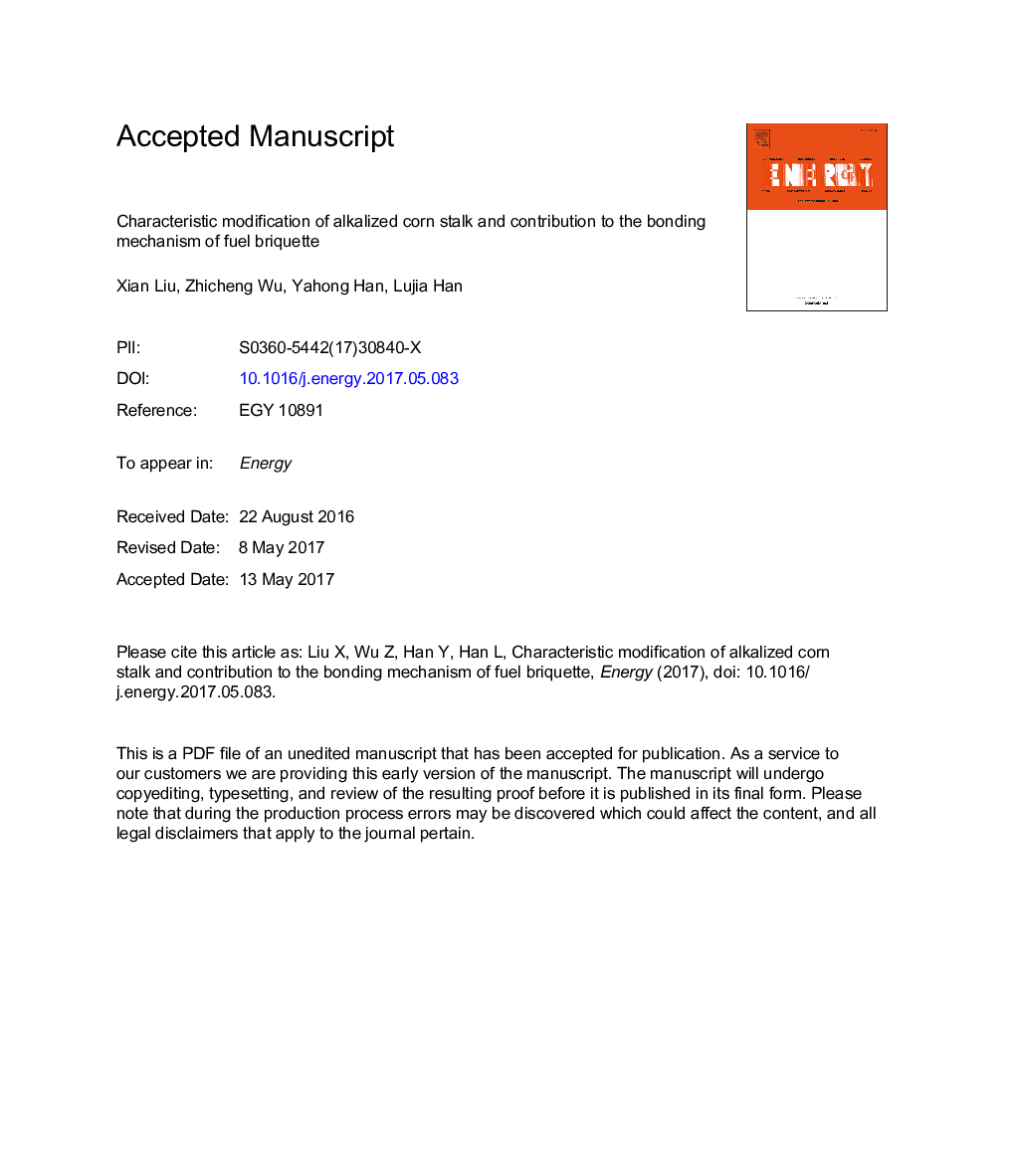| Article ID | Journal | Published Year | Pages | File Type |
|---|---|---|---|---|
| 5476559 | Energy | 2017 | 30 Pages |
Abstract
In this paper, corn stalk was alkalized by gradient concentrations of sodium hydroxide and briquetted with anthracite coal. The bonding mechanism was explored by a combined analysis of physicochemical, microstructure and mechanical properties. Alkaline treatment had a large effect on decomposing most of lignin and dissolving the carbohydrates in corn stalk even at a low concentration of 1%. With the increase in alkaline concentration (for 1%-2%), the degree of decomposition of hemicellulose and amorphous cellulose increased gradually. When the concentration of alkaline reagent was higher than 3%, more than 40% of hemicellulose was degraded. A complete surface structure of a spatial network was achieved when corn stalk was treated by 2% alkaline, which mainly contributed to the bonding performance of compound briquette. Under this condition, the ratio of cellulose to hemicellulose to lignin was approximately 7.0:2.5:0.5, and it also exhibited a good pyrolysis performance for energy conversion.
Related Topics
Physical Sciences and Engineering
Energy
Energy (General)
Authors
Xian Liu, Zhicheng Wu, Yahong Han, Lujia Han,
